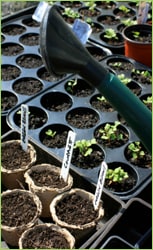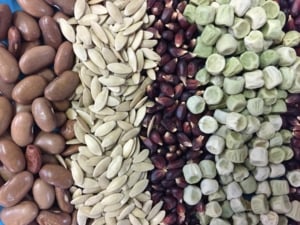Vegetable Planting Times and Strategies
Vegetable Planting Times and Strategies for High Altitudes
High Altitude
Growing vegetables in the mountains, at higher elevations can present challenges but is quite possible. Check out these informative sites for great planting time & strategies for high-altitude  gardening.
gardening.
CSU Extension fact sheet
High Altitude Gardening
Growing Tomatoes in short-season areas
Other gardening strategies
Start times by region
Every region has its own best time for planting. Here is an excellent link to find out the best time to plant your garden in your area.
Vegetables that take a long time to mature need to be planted earlier or even started in the greenhouse. Here is a table that lists those vegetables and the estimated time to plant them. Pick your region at the top row and scroll down that column to see when to plant your veggies.
Growing recommendations by region for vegetables with long maturing times.
| Ds = direct sow Gh = greenhouse Ts = transplant | N.E. | Mid Atlantic | S.E. and Gulf Coast | Upper Midwest | S.W. | Central West Coast | Pacific N.W. | General |
| Broccoli | Gh start Apr 15 and ts May 20. Use floating row covers for insect pests. | Ds Mar. 1. Mulch to protect from heat. | Gh start Aug 1 or Jan 30 and ts Sept. 1 or Mar. 10. Harvest Oct 20 – Dec. 1 or June 1. | Gh start Mar. 1 and ts Apr. 15. | Ds Aug. 1 – May 15. | Ds Mar. 1 – Apr 1, or Aug. 15 – Sept. 30. Will overwinter in garden. | Ds Mar 20 – Apr 10. Use floating row covers to protect against insect pests. Will overwinter. | Optimum germination temperature is 70 deg. F. Full sun, average water. |
| Brussel Sprouts | Ds May 1 or gh start April 1 and ts May 15. Dig plants in late Oct. and store in buckets with dirt over roots. Replant May 1 for final year crop or seed. | Ds March 1. Difficult to get to seed. | Gh Aug 1 and ts Sept. 10. Harvest Nov. 30 – Mar 1. | Gh start Mar 1 and ts Apr. 1 – 15. Dig in Nov. and store in moist sand, replant April 1. | aren’t grown here | Ds July 1. Use shade cloth for young plants. Will overwinter in garden. | Gh start Jul. 15 and ts Aug. 15. Use floating row covers to protect against insect pests. Will overwinter in garden. | Optimum germination temperature is 70 deg. F. Full sun, average water. |
| Cabbage (head forming) | Ds May 1. Use floating row covers to protect against insect pests. | Ds Mar 1 or from Sept 1 – 15 or gh start Jan 15 or Aug 1 and ts Mar 1 or Aug. 1 – Sept 15. Will overwinter in garden for seed production with mulch. | Gh start Aug. 1 or Jan 20 and ts Sept 10 or Feb 15 – Mar. 1. Harvest Nov. 10 – Dec. 15 or Jun. 15. | Ds May 1 or gh start Mar. 1 and ts Apr. 1 – 15. | Ds Aug 1 – Apr 15. | Ds Aug 15 – Sept. 30. Will overwinter in garden for seed production. | Gh start July 15 and ts Aug 15. Use floating row covers to protect agains insect pests. | Optimum germination temperature is 70 deg. F. Full sun, average water. |
| Cauliflower | Doesn’t do well here | Ds Mar. 1. Mulch to protect from heat. | Gh start Aug 1 or Jan 30 and ts Sept. 1 or Mar. 10. Harvest Oct 20 – Dec. 1 or June 1. | Doesn’t do well here | Ds Aug. 1 – May 15. | Ds Mar. 1 – Apr 1, or Aug. 15 – Sept. 30. Will overwinter in garden. | Ds Mar 20 – Apr 10. Use floating row covers to protect against insect pests. Will overwinter. | Optimum germination temperature is 70 deg. F. Full sun, average water. |
| Cucumbers | Use early maturing varieties and ds after May 25. Use floating row covers to protect against insect pests. | Ds april 15 or gh start Mar. 1 and ts April. 15. | Ds April 1 – May 10. | Ds may 1 – June 20. | Ds Mar. 15 – June 15. | Ds April 15 – June 15. | Ds May 20 | Optimum germination temperature is 75 – 95 deg. F. Full sun, average water. |
| Eggplant | Use only early varieties. Gh start Mar 20 and ts June 1. | Ds Apr. 15 – May 15 or gh start Mar. 1 – April 1 and ts April 15 – May 15. | Gh start Mar. 10 and ts May 1 – 20. Full sun and are drought tolerant. | Gh start April 1 and ts May 20. | Ds Jan. 15 – May 15. | Gh start Feb. 1 and ts Apr. 1. | Use early varieties. gh start Mar. 20 – Apr. 1 and ts May 20 – June 1. | Optimum germination temperature is 75 – 95 deg. F. Full sun, average water. |
| Melon | Gh start April 20 – May 10 and ts June 1. Use floating row covers until flowering to protect against insect pests. | Ds April 15 – June 1, or gh start March 1 – April. 15 and ts April 15 – June 1. Mulch in hot, dry weather. | Ds April 1 – May 1. Use floating row covers for protection agains insect pests. | Ds May 1 – June 20. | Ds March 15 – June 15. | Ds April 15 – June 15. | Ds June 1 – 10 only if weather will be warm for several days after planting. | Optimum germination temperature is 80 – 90 deg. F. Full sun, average water. |
| Okra | Doesn’t do well here | Ds April 15 – June 15 | Ds May 1 – 30. | Ds May 15. | Ds March 15 – June 10 | Ds April 1 – June 1. | Doesn’t do well here | Optimum germination temperature is 70 – 95 deg. F. Full sun average water. |
| Peppers | Gh start Apr. 20 and transplanted Jun. 1 Use varieties that mature early in full sun | Ds Apr 15 – Jun 1 or g.h. start Mar 1 – Apr. 15 and ts Apr 15 – Jun 1 in full sun | Gh start Mar 1 and ts Apr. 15-30. | Gh start Apr. 1 and ts May 20. | Ds Mar 15 – May 15. | Gh start Feb 1 and ts Apr. 1, pot in 5 gal pots before frost and replant Apr. 1 | Gh start Mar 20 – Jun 1 and ts May 20 – Jun 1. | Optimum germination temperature is 75 – 95 deg. F. Normally started 6-8 weeks before the last average frost date |
| Pumpkins | Ds May 20 – June 10. Use floating row covers to protect against insect pests. | Ds April 15 – June 1, or gh start Mar. 1 – april 15 and ts April 15 – June 1. | Ds Apr. 15 – May 1, or gh start in July 1 and ts July 21- 30 | Ds May 1 – Jun 15. | Ds Mar. 15 – Jun 10. | Ds April 15 – May 30. | Ds May 20 | Full sun, avgerage water. Protect against insect pests. |
| Squash | Ds May 20 – June 10. Use floating row covers to protect against insect pests. | Ds April 15 – June 1, or gh start Mar. 1 – april 15 and ts April 15 – June 1. | Ds April 15 – May 1 or gh start July 1 and ts July 21 – 30. Full sun and avg water. | Ds May 1 – Jun 15. | Ds Mar. 15 – Jun 10. | Ds April 15 – May 30. | Ds May 20 | Full sun, avgerage water. Protect against insect pests. |
| Tomatoes | Gh start Apr. 20 and transplanted Jun. 1 Use row covers for protection if needed | Ds Apr. 15 – Jun. or g.h. Start Mar1 – Apr. 15 and ts. April 15 – Jun 1. Stake or cage soon. Mulch. | Gh start Mar. 1 and ts. Apr. 15 – May 15. Full sun avg. water, cage or stake soon. Mulch. | Gh start Apr. 1 – May 1 and ts May 15 – Jun. 15. | Ds Mar 15 – May 10, or Aug. 1 – Sept. 15. Protect from mid day sun. | Ds Apr. 15 or gh start Feb 1 – 15. | Gh start Apr. 1 – 20 and ts May 20 – Jun. 1. | Full sun, avgerage water. Protect against insect pests. |
| Watermelon | May be able to grow early maturing varieties. Gh start Apr. 20 – May 10 and ts June 1. Use floating row covers to protect agains insect pests. | Ds April 15 – May 15 or gh start Mar. 1 and ts April 15 – May 15. Mulch for hot, dry weather. | Ds April 15 – May 20. | Ds May 15 – June 15. | Ds Mar. 15 – July 1. | Ds April 15 – June 15. | Ds June 1 – 10 only if weather will be warm for several days after planting. | Germination temp. 85 – 95 deg. F. Full sun, average water. |
Compiled from ‘Seed To Seed’ by Suzanne Ashworth
Copyright 2002 by Seed Savers Exchange, Inc.
Cool Season Planting
Cool Season Planting
- When mid-summer brings a bounty of produce from your garden and you are enjoying the fruits of your labor, it is time to start planting again. The prime planting time for late-season harvests is late summer. Success with fall vegetables requires proper timing. In the spring gardeners wait to plant outside until after the last spring frost, well, in the fall the race is against the season’s first frost. Many of the cool season crops can withstand a few light touches of frost and even become sweeter. Check with your local county extension service to find your area’s first expected frost date.
Check the back of the seed packet to find the days to maturity. Take your frost date and count backward to find the best time to start your next round of seeds. Cooler fall growing temperatures may require an extra week or two for the plants to reach maturity. Many of your fall crops can be harvested when young and immature, too.
Which crops to plant for the Cool Season Planting?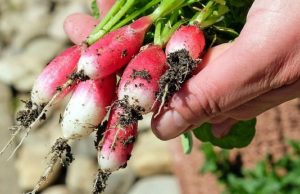
Plants that do well in the early spring work for the cool fall temperatures. These will do well right up to the frost date and even beyond.
Cabbage takes a long season to mature and many gardeners don’t even plant cabbage in the spring because it doesn’t have enough time to mature before the mid-summer’s heat stops growth. Start these seeds mid-summer, a good 3 months before the first frost date.
Kale should be planted 85 – 90 days before the first frost. The leaves can handle a few light touches of frost and become sweeter each time.
Carrots can be planted 80-85 days before frost. They can be harvested when young and tender. Even after the cold temperatures shrivel the tops, they can be dug, sweet and juicy, from the ground throughout the fall.
Broccoli has the same problem as cabbage with a long time to mature as cabbages, so planting for a fall harvest is often best. Plant broccoli seed directly in the soil about 80-85 days before frost.
Beets can do double duty with green tops for salads and tasty roots as well. Plant seeds about 65-70 days before frost, depending on the type you choose.
Leafy greens such as spinach and leaf lettuces, rocket, and Swiss chard all do best in the cooler temperatures of fall. Plant seed about 50-60 days before frost depending on the type chosen. These can be harvested when young and immature for delicious baby greens.
Radishes are always great to spice up salads. These are fast-growing and can be planted 30-35 days before the first frost. Pull them when young and tender.
If you have any questions at all about how to start your BBB Seed please do not hesitate to email us at info@bbbseed.com. We look forward to answering any questions you might have!
Download our E-Book here:
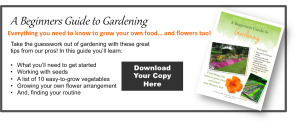
CONTAINER GARDENING
Growing a Garden in a Container
Planning ahead-
Take a moment to look at the locations where you want to place your containers. Consider such things as sunlight (strength and time) and wind. If you have pots with sun/heat-loving plants, arrange them to shade your pots with those plants that need less sun and heat. Tall plants or plants that vine can be trellised to grow vertically and provide a natural barrier for tender plants. Make sure to anchor trellises and containers with tall plants, to keep them from getting blown over. If you plan to place your containers on a covered porch or balcony or any place that receives limited sunshine, you should select vegetables and flowers that don’t require as much. Leafy greens, snap peas, Chinese mustards, and kale will do quite well in these conditions, but tomatoes, and peppers, probably not.
When growing your garden in containers rather than a garden plot, it is just as important to choose varieties that will be able to reach maturity in your growing season. If you have a short growing season, check the maturity dates on the packages and plan to start some seedlings in the warmth of the indoors to get a jump on the growing season.
These varieties are not practical for container gardening due to their size or length of growing season (At the end is a list of vegetables/plants that will do well in containers.):
Watermelon and most cantaloupes (although there are some midget varieties that can do well)
Large Pumpkins and winter squash
Corn
Head cabbage (except as microgreens)
Mammoth sunflowers (except as sprouts or micro greens)
Beefsteak type tomatoes
Garlic bulbs/full sized Onions
Make sure to prepare your containers and pots properly, to give your veggies the best chance possible. You will be surprised by how much those little seedlings will expand, and there is as much growth below the soil as there is above the soil, so don’t squeeze them into tiny containers. Any type of vessel can be used, just keep in mind the size of the plants and the location. Terra cotta pots are inexpensive but dry out more quickly than others, metal tends to get quite hot in the sun, and plastic is versatile and lightweight.
………………………………………………………………………………..
Getting started-
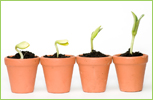 For Container Gardening, start your long-season varieties, indoors, in good quality starting soil or soilless mixture. Seedlings should be kept consistently moist (not wet) and exposed to fairly strong light, sunlight, or florescent, for at least 10 – 12 hours each day as soon as sprouts appear. This will keep them from getting leggy and looking for light. Seedlings that are sown more closely together can show more vigor as their roots symbiotically help each other extract nutrients from the soil. As the first true leaves appear, choose the strongest seedling starts that you will need for your containers and clip off the remaining which gives the strong ones some space to expand. Transplant to pots and containers shortly after the first true leaves appear. When transplanting to your containers and pots, make sure to space the seedlings according to the package directions for each type of vegetable.
For Container Gardening, start your long-season varieties, indoors, in good quality starting soil or soilless mixture. Seedlings should be kept consistently moist (not wet) and exposed to fairly strong light, sunlight, or florescent, for at least 10 – 12 hours each day as soon as sprouts appear. This will keep them from getting leggy and looking for light. Seedlings that are sown more closely together can show more vigor as their roots symbiotically help each other extract nutrients from the soil. As the first true leaves appear, choose the strongest seedling starts that you will need for your containers and clip off the remaining which gives the strong ones some space to expand. Transplant to pots and containers shortly after the first true leaves appear. When transplanting to your containers and pots, make sure to space the seedlings according to the package directions for each type of vegetable.
Here are some plants that do not like to be transplanted. Instead, start them in individual moss starter cubes or use homemade newspaper pots or toilet paper tubes that can just be set into your containers at the appropriate spacing.
Beans Squash Burnet
Chinese Cabbage Borage Chervil
Cucumbers Caraway Pumpkins
Melons Coriander Dill
Root crops (except beets, turnips, and celeriac)
Make sure that your container has drainage holes in the bottom. Place a couple of layers of newspaper in the bottom of the pot to keep soil from falling through the holes, then place a 1-inch layer of moss on top of the newspaper. If you don’t have a source for sphagnum moss, coarse gravel will work. Fill the container with good, rich pre-moistened, potting soil, leaving room at the top. Pat it down firmly to fill in the spaces but do not pack hard. Take your young transplants (holding by the leaves or root ball, not the tender stem) or degradable seedling pots, one at a time, placing each on the top of the soil. Spread out the roots, and sprinkle more pre-moistened soil over the roots, covering them completely. Use enough soil to bring the level up to just under the first leaves for most seedlings. Do not cover the crown on plants such as lettuce. The plant’s first leaves should be at the level of the top of the container. Pat the soil gently, firming it over the roots and young stems.
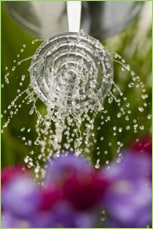 Water your containers when the soil feels dry in the top few inches. Continuously wet soil suffocates the roots and encourages bacteria and fungi to grow. Usually, we water when we have time or are home, but watering when needed instead of on a schedule is usually best. Avoid wetting the leaves as much as possible. Try to use tepid water and if you are using chlorinated tap water, allow it to sit overnight exposed to air to dissipate the chlorine which can damage plants and kill beneficial soil bacteria.
Water your containers when the soil feels dry in the top few inches. Continuously wet soil suffocates the roots and encourages bacteria and fungi to grow. Usually, we water when we have time or are home, but watering when needed instead of on a schedule is usually best. Avoid wetting the leaves as much as possible. Try to use tepid water and if you are using chlorinated tap water, allow it to sit overnight exposed to air to dissipate the chlorine which can damage plants and kill beneficial soil bacteria.
Fertilize with low doses of good quality organic fertilizer every 7-10 days.
Don’t be shy about removing plants that are past prime or are beginning to bolt. Removing these will leave spaces where you can plant another round of short-season varieties and ones that prefer to mature in the cooler weather of fall. Lettuces and other leafy greens are good for this, maybe another round of snap peas, beets or radishes, arugula, and bunching onions. Mustards and kales and fennel love the cool days of fall
………………………………………………………………………………..
Design – Container Gardening can be beautiful
Create groupings with your pots and experiment with variations in height, by placing some containers on concrete blocks or other empty containers turned upside down. This adds visual appeal and at the same time maximizes the space available. Groupings also help to make the job of watering a bit easier. Pick a particularly spectacular container plant to be the visual focus and arrange other not-so-pretty container plants around.
Make your containers a bit more decorative by planting different varieties together in one pot. Use the spaces under taller plants to place smaller herbs and leafy greens. Some vegetables live in harmony with one another, some are actually beneficial to each other and some hate each other. Mix colors and textures and think about including edible flowers tucked in around the edges. See the article, Flavorful Flowers. 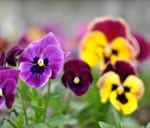 Check each variety on our website to see if your combinations will work together. Here are some examples:
Check each variety on our website to see if your combinations will work together. Here are some examples:
• Lettuce does well with beets, bush beans, pole beans, cabbage, carrots, cucumbers, onions, radishes, and strawberries. You can also plant your lettuce at the base of young sunflowers for a little shade.
•Celery, dill, onions, and potatoes are great companion plants for cabbage. Planting clover with your cabbage will keep insects away and chamomile will improve the flavor. Cabbage does not like strawberries, tomatoes, peppers, eggplant, rue, grapes, or pole beans.
•Cauliflower is compatible with basil, beans, dill, garlic, hyssop, lettuce, mint, onion, rosemary, sage, and thyme. It does not like grapes and rue.
•Plant your peas with bush beans, pole beans, carrots, celery, cucumber, eggplant, parsley, radish, spinach, strawberry, sweet pepper, tomatoes and turnips. Keep your peas away from chives, and onions.
•Tomatoes grow well with asparagus, basil, beans, carrots, celery, chives, cucumber, garlic, head lettuce, marigold, mint, nasturtium, onion, parsley, peas, peppers and marigold. Basil will repel flies and mosquitoes from your tomato plants while also improving their growth and flavor. Beebalm, chives, and mint will improve the health and flavor of your tomatoes. Keep potatoes, fennel, dill, cabbage, and cauliflower away from your tomato plants.
………………………………………………………………………………..
VEGETABLES/PLANTS THAT DO WELL FOR CONTAINER GARDENING:
Beans (Pole and Bush types)
Direct sow into containers when night temperatures reach 60 degrees F, 6“ minimum soil depth, full sun, and harvest in mid-late summer, Provide a trellis or climbing structure
Beets – Direct sow into containers in early spring and late summer, 6” minimum soil depth, full sun to partial shade, harvest early summer and again in fall
Carrots (Nantes, Round, or Finger-type are best for containers) – Direct sow into containers when night temperatures reach 60 degrees F, 8” minimum soil depth, full sun, harvest in summer through fall.
Cucumbers (vine or bush-types) – Direct sow into containers when the day temperatures reach 70 degrees F or start indoors and transplant, 10” minimum soil depth, full sun, harvest in summer, Provide a trellis or climbing structure for vine-types.
Eggplant – Start inside 8 weeks before temperatures usually reach 80 degrees F for your area, then transplant to your container, 10” minimum soil depth, full sun, and harvest late summer.
Leafy Greens (Swiss chards, Collards, Kales, Mustards, Asian Greens, Pak Choy) – Direct sow into containers when the nighttime temperatures are above freezing, or, start indoors 3-4 weeks before and transplant, 8” minimum soil depth, full sun to partial shade, harvest late spring through winter.
Lettuces and Salad greens – Direct sow into containers after Spring’s last frost date, or start indoors 4 weeks before and transplant after hardening off when about 2 “ tall, sow seed again in early fall, 6” minimum soil depth, full sun to partial shade, harvest spring through early summer and again in fall.
Onions, Garlic, Leeks – Direct sow into containers after Spring’s last frost date, 6” minimum soil depth for bunching onions and young (green) garlic, 8” for Leeks, full sun, harvest summer to fall. Mounding soil up around the base of bunching onions and leeks will encourage long white stalks. Grow garlic in containers to use the green shoots and any small bulb growth.
Peas – Direct sow into containers when the soil is no longer frozen, Soaking the seeds overnight will speed up germination, use an inoculant (a beneficial bacteria that enables the roots to use the nitrogen pulled from the atmosphere and stored in nodules on the roots), especially when planting into containers with new potting soil. 8” minimum soil depth, full sun, harvest in late spring to early summer with secondary fall crops possible, Provide trellising for vine-types or cages to support bush-types.
Peppers – Plant seeds indoors, keeping at 80 degrees F for about 2 weeks, starting 10 weeks before nighttime temperatures remain above 55 degrees and daytime temps reach at least 70 degrees. Transplant into containers after hardening off, 8” minimum soil depth, full sun, and harvest in late summer.
Potatoes – Plant disease-free seed potatoes in a large container (30” deep, 20” across) filled 1/3 full of potting soil, 5-6 “ apart, and cover with 2 inches of soil, When plants are about 6” tall cover the bottom half with potting soil, continue doing this as the plant grows until reaching the top of the pot. Full sun, harvest summer to fall.
Radishes – Direct sow into containers when the soil is no longer frozen and every other week till late spring, 4” minimum soil depth, full sun to light shade, harvest all spring and second harvest in fall.
Spinach – Direct sow into containers when the soil is no longer frozen, replant first of August for fall, 6” minimum soil depth, full sun to partial shade, harvest in spring, early summer, and fall.
Squash (zucchini, yellow summer, yellow crookneck, patty pan, mini pumpkins) – Plant seeds indoors 2-3 weeks before the spring last frost date, transplant into sunny, warm containers, and cover with a row cover for several days, 10” minimum soil depth, full sun, harvest summer to early fall, pick when young and small, provide trellis and support for vines.
Tomatoes – Plant seeds indoors keeping them at 75 degrees F for about 2 weeks, starting 6-8 weeks before Spring’s last frost date, transplant at least once to another larger pot when they have 3 sets of true leaves burying them up to the first set of true leaves, keep in good light, 12” minimum soil depth, full sun, harvest late summer and fall.
Herbs – Herbs are mostly perfect plants for container gardens, being small and not fussy.
Saving Seeds
Saving Seeds from Heirloom Vegetables
What are “heirloom” vegetables? An heirloom vegetable is a non-hybrid, open-pollinated variety that has been passed down from generation to generation and, in some cases, can be traced back hundreds of years. These seed lines have been carefully selected to maintain uniformity and consistency for germination.
Heirloom seeds become ‘heirloom’ because they exhibit exceptional traits desired by the gardener. Often this means the plants are more colorful, flavorful, and unique, or have great germination and vigor. Often the traits are location-dependent. Meaning, seeds planted in one garden will not produce in the same manner in another location. We encourage you to try heirloom seeds, see which have the qualities for your area to become your favorites and make them into your own very special seed line. Seed saving from heirloom vegetables is easy and fun.
Gardeners have found that as seeds are selected and saved over many years, production is increased and the quality is improved, creating plants that will produce best for that locale and will resist diseases and pests of that locale. Contributing to genetic diversity strengthens the ecosystem. Historically farmers and local gardeners have created and sustained this rich genetic heritage by learning to save their own seeds from varieties that perform best in their own mini-ecosystems. The current trend toward mono-crops where only one seed type is used to produce a crop worldwide is eliminating the ability to be able to find genetic variations that will withstand emerging pathogens and climate changes.
Planting your crop:
Start with good Heirloom Seed varieties. Keep in mind that to allow the plants to produce seed and to allow the seed to fully mature, you will have to allow for a longer growing season. This can be done by starting plants indoors and arranging for protection from frost in the late season. You will grow some for food or flower harvest and some for seed production. Fully mature seeds will be viable (able to germinate) and produce vigorous plants. You may want to do some research on the different flower types for proper pollination techniques and plant with row/species separation in mind, to prevent cross-pollination.
You also may look into caging procedures to isolate species that are in flower at the same time. By caging different plants on alternate days, you can take advantage of the pollinators to do the work without cross-pollinating your crop. Cage one plant or group on one day and early the next day, before the bees wake, transfer your cage to a different plant or group. Some crops are biennial and do not produce seed until the next year, so you will need to determine whether you should leave the roots in the ground over the winter or dig and store them.
There are many publications with detailed information on seed-saving and growing techniques for each species. “Seed to Seed” by Suzanne Ashworth, 2002 by Seed Savers Exchange, Inc. is a good way to get started. Also, check out these easy instructions for seed saving, written by the International Seed Saving Institute, a non-profit established to teach seed saving.
Why save seeds:
When you grow crops using your own saved seeds from your best plants for next year’s crops, the seeds begin to adapt to the growing conditions (temperature, moisture levels, pests, diseases, and so forth) that exist in your garden. This adaptation makes your garden stronger over time. Seeds that are used to grow crops year after year have the opportunity to adapt to incremental climate changes. As global temperatures change, these plants will have a better chance at survival and productivity. A single plant from a single seed can produce dozens or hundreds of seeds, increasing your seed stock exponentially. Sharing and exchanging seeds with other gardeners, community gardens or seed libraries helps to increase the diversity of everyone’s collections.
Harvesting and collecting seeds:
When saving seeds from heirloom vegetables, look for favorable characteristics such as; freeze and cold tolerance, heat tolerance, adaptability, winter hardiness, early maturation, vigor (strong germination, and growth), flavor, color, size, texture, etc. Also, look for desirable traits such as; vine or plant type, seed type, and specific disease resistance. Plan to be ready to harvest the seed as they mature.
– Collecting dry seed:
It’s easy to save seeds from plants that produce pods, husks, and other dry casings such as peas, beans, and flowers. The technique is called “dry processing” and is faster than collecting seed from fleshy, pulpy fruits such as tomatoes and cucumbers. Seeds that are dry-processed can be allowed to dry right on the plants unless there is wet weather in the forecast. Seeds often fall where they may, naturally, little by little. Often the pods will pop open when you are not around to collect the seed and it will be lost. Allow the seed pods to remain on the plant in the ground for as long as possible. Usually, the seed will not continue to mature after the pods are cut from the plant. To collect the seeds easily as the seeds begin to mature, secure paper bags over the seed heads and attach them to the stems of the plants. As they mature they will drop into the bags.
Separating the seeds from the chaff (dried pods and stems) is called threshing. Commercial threshing is done by multitasking machines that can harvest, thresh, and winnow the seeds all at once. For the home gardener, a bag, pillowcase, or small sack is all that’s necessary. Put the seeds into the bag, secure the ends, and roll it around, lightly crushing and breaking up the pods a bit. Be gentle so you don’t damage the seeds, but just loosen the chaff. For tinier seeds, you can just put them on a board and crush them with your fingers.
Then you will need to winnow the chaff from the seeds. Place the seeds in a bowl and gently blow on them to remove the lighter-weight chaff. Swirl the seeds around and continue blowing gently until most of the chaff is removed. Another option is to use a screen or sifter where the holes are smaller than the chaff to simply sift them apart.
– Collecting seeds from pulpy fruits:
Pick the best, most ripe (even to the point of over-ripe) tomato, pepper, cucumber, etc. Choosing an over-ripe veggie will ensure the seed has fully developed. If you wait for a frost or freeze before you pick the fruit or veggie, most of the seed will not be developed enough to be viable next year.
Cut open the fruit and scoop out the seeds or for small fruits like cherry tomatoes, simply squeeze the seeds out into a glass jar. Add a little water and label the jar with the seed variety. The seeds usually are surrounded by a gel that inhibits germination. Leave for two to five days to begin fermenting. This will break down the seed coat while killing off many of the harmful bacteria and fungi lurking on the seeds. Swirl the contents in the jar every day.
When the pulp floats to the top, the seeds are ready for cleaning. Most of the seeds will have sunk to the bottom. Carefully skim off the pulp then tip the liquid and seeds into a strainer. Wash the seeds under running water, using the back of a wooden spoon to carefully remove any remaining material stuck to the seeds. Spread the seeds onto a paper towel to remove most of the water, then transfer them to a non-stick surface such as a dinner plate. Dry the seeds in a warm place out of direct sunlight. It will take two to three weeks for the seeds to completely dry out.
Make sure you label the seeds with their name and the date they were collected immediately after you have finished harvesting each variety. Excellent record-keeping is your best friend when it comes to seed-saving. It’s amazing how easy it is to mix up seed varieties!
How long do seeds last?
If you keep your seeds in a cool dry place, your seeds can last for years. These things are seed killers: excess moisture, excess heat, light, and rodents. Some seeds last easily for years. Others only last one year before the germination rate goes down.
Here is a chart from the Chicago Botanic Gardens on longevity in vegetable seeds as well as one from Iowa State University extension.
Seeds that have passed their prime for producing viable plants can be used to scatter as a cover crop, for bird seed, for eating, or for cooking (as in herb seeds).
5 Easy Tips for Successfully Planting Grass Seed
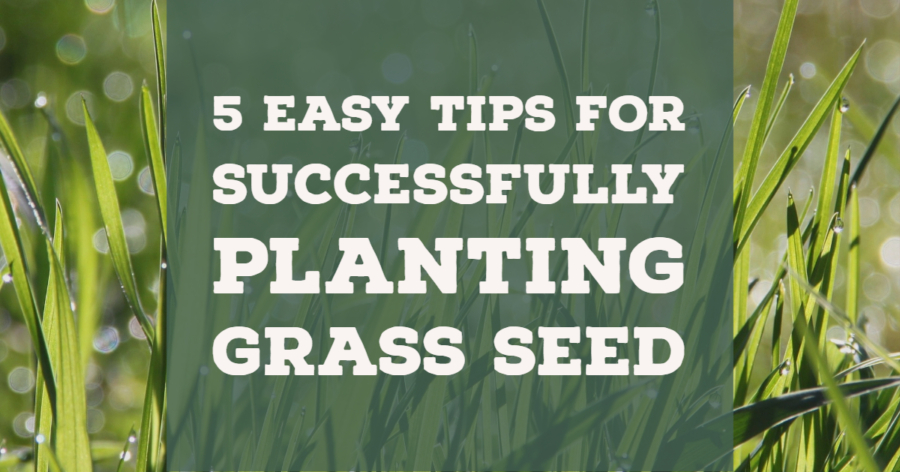
by Sam Doll
Now that fall is nearly upon us, it’s time to start thinking about planting grass seed! Don’t know what you are doing? Don’t worry. We are here to help.
Here are our 5 tips for successfully planting grass seed this season:
1. The Season Matters
While some warm-weather grasses, like bermudagrass, should be planted in early summer, most grasses need mild weather to successfully germinate and survive. Freezes and harsh heat can kill off your baby grass before it has a chance to become established. Late Spring and early Fall, when the soil temperature is between 50 to 80 degrees, is the best time to plant most grass seeds.
2. Find the Right Seed
Find the grass that will suit your lifestyle and location. Some mixes, like our Green Manure and Cool Season Cover Crop, are great for restoring the soil nutrients in your soil. Some, like our Colorado Supreme Turf Grass Mix, are better for heavy foot traffic. Native and drought-tolerant grasses are great for creating a sustainable and low-maintenance landscape. Make sure to consider your soil type, climate, amount of sun, and intended use when picking a grass mix.
We have a wide variety of grass mixes that will suit all your needs.
3. Prepare Your Soil
Once you’ve chosen your site, use a shovel or a sod cutter to remove the existing plants and grass from the area. Remove any debris and rocks you see, till the soil, and fill in any low spots. You want your soil to be broken into pebble-sized particles.
Rake the site to even out the soil and remove small debris. Be careful when bringing in new topsoil to make sure it doesn’t contain unwanted weed seeds.
Optional: You can send a soil sample to your local extension office to have it tested to see if you need any soil amendments. You can find extension offices near you with the help of this tool from GardeningKnowHow.com.
As for pH, you generally want to keep the soil between 6.0 and 7.0.
4. Seed and Fertilize
Once your site is prepped, it’s time for planting your grass seed! Using a drop spreader or a broadcast spreader, spread half the seed lengthwise over your site, then use the other half and spread crosswise over your site. A recommended seeding rate will be listed on the seed tag.
Feeding with starter (weak) fertilizer the same day as you spread seed will provide proper nutrients for early growth and establishment. Make sure the site stays moist, but not soggy, through germination.
5. Maintenance
Different mixes require different maintenance. Generally, once grass reaches 5-6 inches (for turf type), it is recommended to cut it to encourage even growth. Water and fertilize as needed.
We hope these tips will make planting grass seed a breeze for you! If you still have questions or need any other advice, please don’t hesitate to contact us.
Don’t Pass On Peas
Tips for Successfully Growing Peas
by Heather Stone
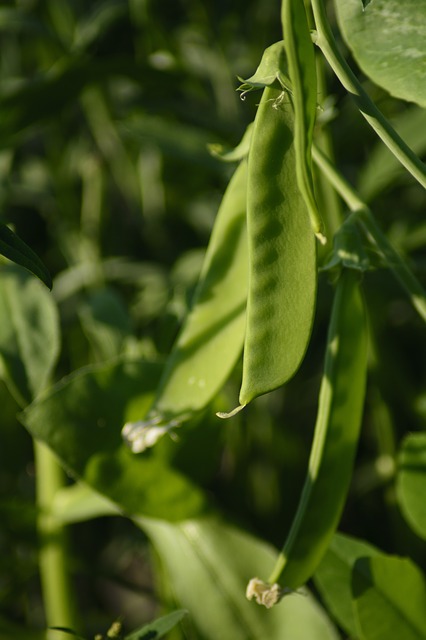
Image by Reginal from Pixabay
Plant Green Peas for one of the first crops in the spring. As soon as you can stick your finger into the soil you can plant peas. Whether you plant shelling, snap or snow peas this early crop loves the cool weather of spring, producing tender pods that are hard to resist. More often than not, they are eaten straight off the vine right there in the garden, very few making it to the kitchen. Every year I always wish I would have planted more.
Planting green peas should happen as soon as the soil can be worked, about 4-6 weeks before your average last frost date. For best germination, soil temperatures should be around 50 degrees F. Do be cautious of excess moisture. You don’t want your seeds sitting in wet soil.
Before planting, soak your seeds overnight. This will help speed germination. Plant seeds about 1” deep and 2-3” apart in well-loosened soil in a sunny spot in your garden. Peas will also do well in part shade. Give your peas a trellis, as most peas need something to climb on. Keep the area moist until the seeds germinate, on average between 7-14 days.
Green Peas are an easy crop to grow. Keep the plants moist, especially once they start producing. When they reach 8-12” tall mulch your vines well to keep the soil cool and help retain moisture. Peas grow best in temperatures below 70 degrees F, so plant your seeds early. Once temperatures reach 80 degrees the vines tend to stop producing.
When the peas begin to ripen, harvest daily and be sure to use two hands to pick. Use one hand to hold the vine and the other to pick the peas. This way you will avoid damaging the tender vines. For the crispiest peas, pick in the morning after the dew has dried. Peas will last about 5 days in the refrigerator (if they make it there) and any extra freeze well.
Like all legumes, peas fix nitrogen in the soil that other plants can use. When your peas are done for the season, remove the vines but leave the roots in the ground. Plant a nitrogen-loving plant in the area that can benefit from the extra nitrogen in the soil.
Don’t wait! Get out in the garden and plant some peas today! Try one of our tried and true varieties such as Sugar Ann, Oregon Sugar Pod or Green Arrow.
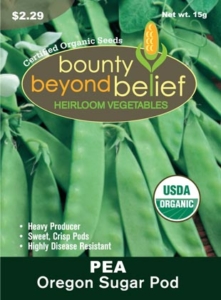
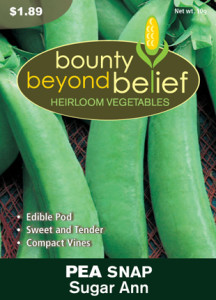
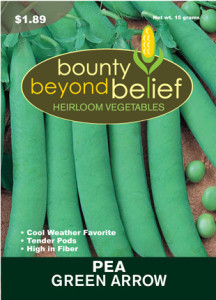
AN EASY WINDOWSILL HERB GARDEN

photo courtesy of pixabay
At Home Gardening Tips
by Heather Stone
Are you are itching to get your hands in the dirt, but outside the ground is covered in snow? Well, a windowsill herb garden might be just the thing to get you through until spring finally arrives. Every kitchen and every cook deserves fresh herbs. They will help liven up not only your cooking but your gardening spirit too. Check out our herb collections here and here!
To get started make sure you have a sunny windowsill that gets at least 6 hours of sunlight. If you get less than that you will want to provide some additional lightening or your herbs will struggle.
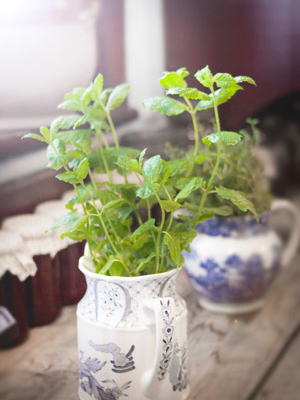
photo courtesy of pixabay
Next, purchase some small starter plants from your local nursery or garden center or try starting your herbs from seed. Starting from seed may take a little longer, but it’s less expensive. When choosing plants or seeds pick herbs you know you like to cook with. Some great herbs for containers include thyme, basil, cilantro, parsley, chives, oregano, dill, sage, mint and savory.
Whether you are purchasing plants or starting from seed you will need containers and quality, lightweight potting mix. If you are starting with plants make sure your container(s) have a drainage hole(s) and are roughly 6-10” in diameter. Start by adding some potting mix to the bottom of your container. Next, place your plant in the pot and gently fill in and around it with more potting mix, leaving around an inch of room at the top for watering. Gently press the soil down and water well. Most herbs don’t like their soil too wet so make sure to test your new herb plants for water by sticking your finger an inch or two below the soil surface. If you find the soil is dry, it’s time to water. Fertilize your new herb garden once a month with a ½ strength liquid fertilizer. Be sure to give your plants some time to get established before you start harvesting.
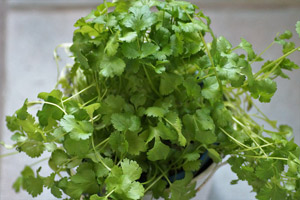
photo courtesy of pixabay
If you are starting from seed, you can plant in smaller containers to start and pot up as your plants get bigger. Fill your containers with a damp potting mix. Sprinkle 4-6 seeds on top of the surface. Gently press them in and cover lightly with more potting mix. Cover with a plastic bag or plastic wrap and place them in a warm, sunny windowsill making sure the soil surface stays moist. Once your seeds start to sprout, remove the plastic. Keep your new sprouts watered whenever the soil surface feels dry and watch them grow.
Here are some herbs that are easy to start from seed:
Basil
The dried version is no comparison to fresh basil. With so many uses and so many varieties to choose from basil is an easy choice for the indoor herb garden.
Cilantro
Cilantro is easy to start from seed and germinates in 7-14 days. Use the fresh leaves in salads, sauces and to garnish a wide array of dishes.
Parsley
Parsley is both productive and attractive when container-grown. It takes a bit longer to germinate, 12-28 days, but it’s worth the wait. Harvest leaves as you need them once the plant is growing strong.
Chives
Chives are another plant easily grown in a pot. The slender grass-like leaves are delicious and make an excellent flavoring in soups, stews, dips and salads. Sprouting in just 10-14 days you will have fresh chives in no time.

